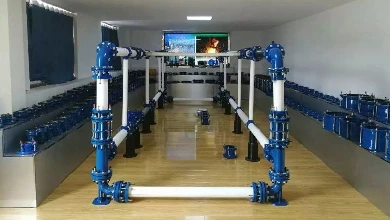Steel Grating Guidelines and Standards for Industrial Applications and Construction Projects
Understanding Steel Grating Specifications
Steel grating is a crucial component in various industries, used for flooring, drainage, safety, and many other purposes. The specifications for steel grating can significantly influence its performance, durability, and application. This article aims to outline the key specifications and considerations associated with steel grating.
Types of Steel Grating
Steel grating comes in several types, with the most common being welded steel grating, press-locked grating, and swage-locked grating. Each type has unique characteristics suitable for different applications.
1. Welded Steel Grating This is produced by welding bars at right angles to form a rigid structure. It is well-known for its strength and durability, making it ideal for heavy-duty applications such as in industrial plants and bridges.
2. Press-Locked Grating This type is made by pressing and locking the bars together without welding. This method allows for a more lightweight grating that is still strong, making it a popular choice for walkways and platforms.
3. Swage-Locked Grating This is manufactured by swaging the crossbars into a series of bearing bars, providing a sturdy and consistent product. It’s often used in applications requiring high strength with a lightweight design.
Material Specifications
The material choice affects the grating's resistance to environmental factors. Common materials for steel grating include
- Carbon Steel This is the most frequently used material due to its strength and affordability
. However, it requires protective coatings to prevent rusting and corrosion, particularly in outdoor applications.- Stainless Steel Renowned for its corrosion resistance, stainless steel grating is ideal for harsh environments, such as chemical plants or coastal locations.
- Aluminum Although not a type of steel grating, aluminum grating is lightweight and resistant to corrosion, often used in applications where weight is a critical concern.
steel grating specifications

Size and Load Specifications
Steel grating is available in various sizes and load ratings, allowing it to accommodate different applications. The load capacity, often expressed in terms of safety factors, is crucial for determining if the grating will withstand expected loads. Typical load classifications include
- Light Duty Suitable for pedestrian traffic and non-vehicular loads. - Medium Duty Designed for occasional vehicle traffic and heavier foot traffic. - Heavy Duty Suitable for vehicular traffic, heavy machinery, or high footfall areas.
Spacing and Bar Configurations
The spacing between bearing bars affects solidity, drainage, and load distribution. Common bar spacing ranges from 1 to 3 inches, with 1.5 inches being typical for many applications. The bar configuration can also vary—some applications might require a tighter spacing for safety, while others may benefit from wider spacing for drainage.
Surface Finish and Safety Features
A crucial aspect of steel grating specifications is the surface finish. A grating’s surface can be smooth, serrated, or have other patterns to increase traction and reduce slippage potential, which is especially vital in wet or oily environments. Safety features like leading edges and curb angles can also enhance user safety in high-traffic areas.
Compliance and Standards
Steel grating manufacturers often adhere to industry standards set by organizations such as the American National Standards Institute (ANSI) and the American Society for Testing and Materials (ASTM). These standards ensure that the grating provides adequate performance and safety across various applications.
Conclusion
When selecting steel grating, understanding the specifications is essential to ensure it meets the necessary performance requirements for its intended use. From choosing the right type and material to considering load capacity and safety features, each decision impacts efficiency, safety, and longevity in application. As industries evolve, steel grating continues to adapt, providing crucial solutions across diverse sectors.
-
The Smarter Choice for Pedestrian AreasNewsJun.30,2025
-
The Gold Standard in Round Drain CoversNewsJun.30,2025
-
The Gold Standard in Manhole Cover SystemsNewsJun.30,2025
-
Superior Drainage Solutions with Premium Gully GratesNewsJun.30,2025
-
Superior Drainage Solutions for Global InfrastructureNewsJun.30,2025
-
Square Manhole Solutions for Modern InfrastructureNewsJun.30,2025
-
Premium Manhole Covers for Modern InfrastructureNewsJun.30,2025
